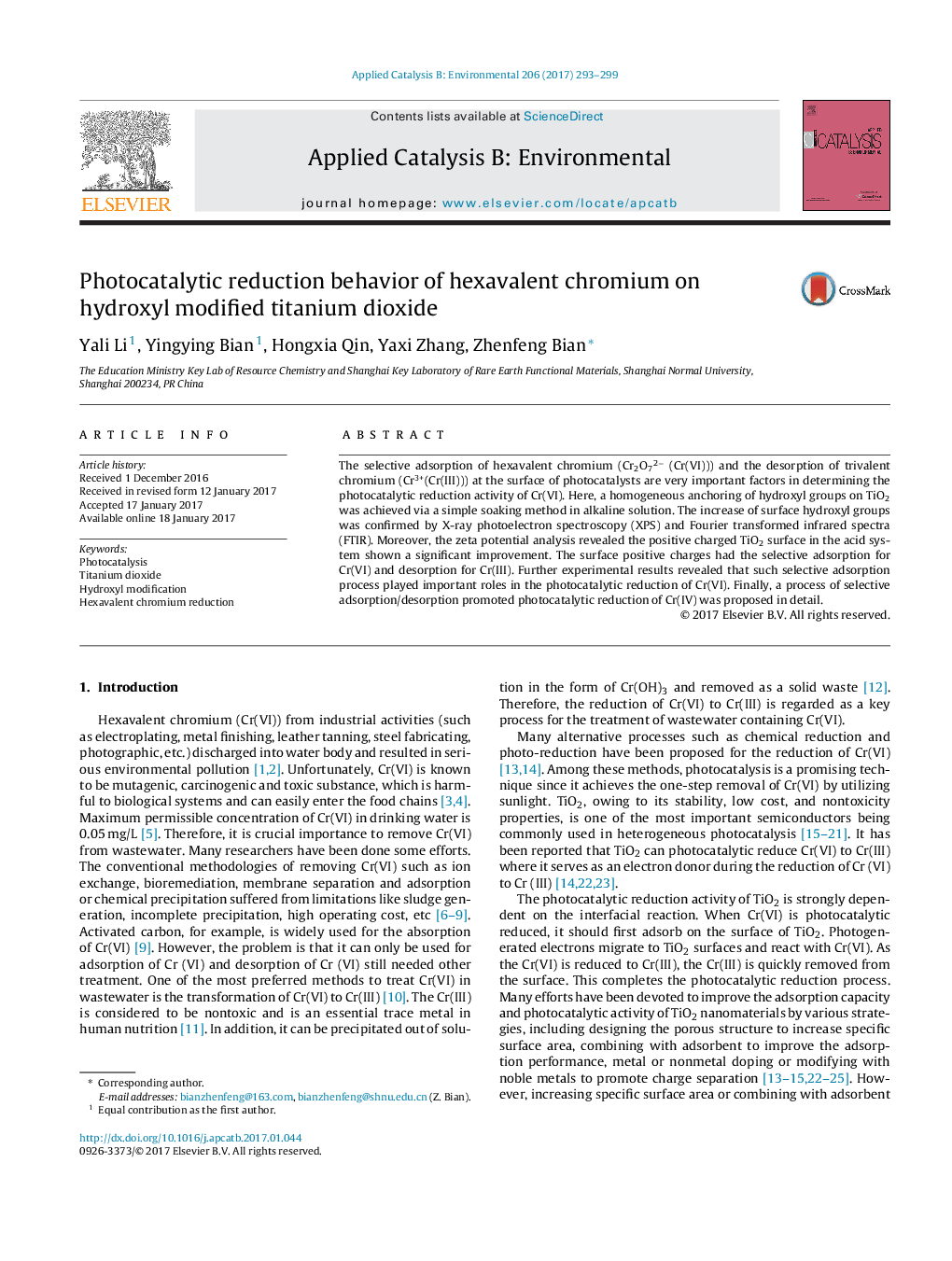| Article ID | Journal | Published Year | Pages | File Type |
|---|---|---|---|---|
| 6454686 | Applied Catalysis B: Environmental | 2017 | 7 Pages |
â¢The photocatalytic reduction of Cr(VI) to Cr(III) was more efficient on hydroxyl groups modified TiO2 by a simple alkali soaking method.â¢The selective adsorption of Cr(VI) as well as desorption of Cr(III) greatly improved the performance of the photocatalytic reduction of Cr(VI).â¢With the hydroxyl groups, TiO2 based photocatalysts possessed higher durability owing to the fast release of Cr(III) product and relief the coverage on active sites.â¢It is expected that the current work could provide a simple and effective way in photocatalytic reduction of ionic pollutants.
The selective adsorption of hexavalent chromium (Cr2O72â (Cr(VI))) and the desorption of trivalent chromium (Cr3+(Cr(III))) at the surface of photocatalysts are very important factors in determining the photocatalytic reduction activity of Cr(VI). Here, a homogeneous anchoring of hydroxyl groups on TiO2 was achieved via a simple soaking method in alkaline solution. The increase of surface hydroxyl groups was confirmed by X-ray photoelectron spectroscopy (XPS) and Fourier transformed infrared spectra (FTIR). Moreover, the zeta potential analysis revealed the positive charged TiO2 surface in the acid system shown a significant improvement. The surface positive charges had the selective adsorption for Cr(VI) and desorption for Cr(III). Further experimental results revealed that such selective adsorption process played important roles in the photocatalytic reduction of Cr(VI). Finally, a process of selective adsorption/desorption promoted photocatalytic reduction of Cr(IV) was proposed in detail.
Graphical abstractDownload high-res image (142KB)Download full-size image
